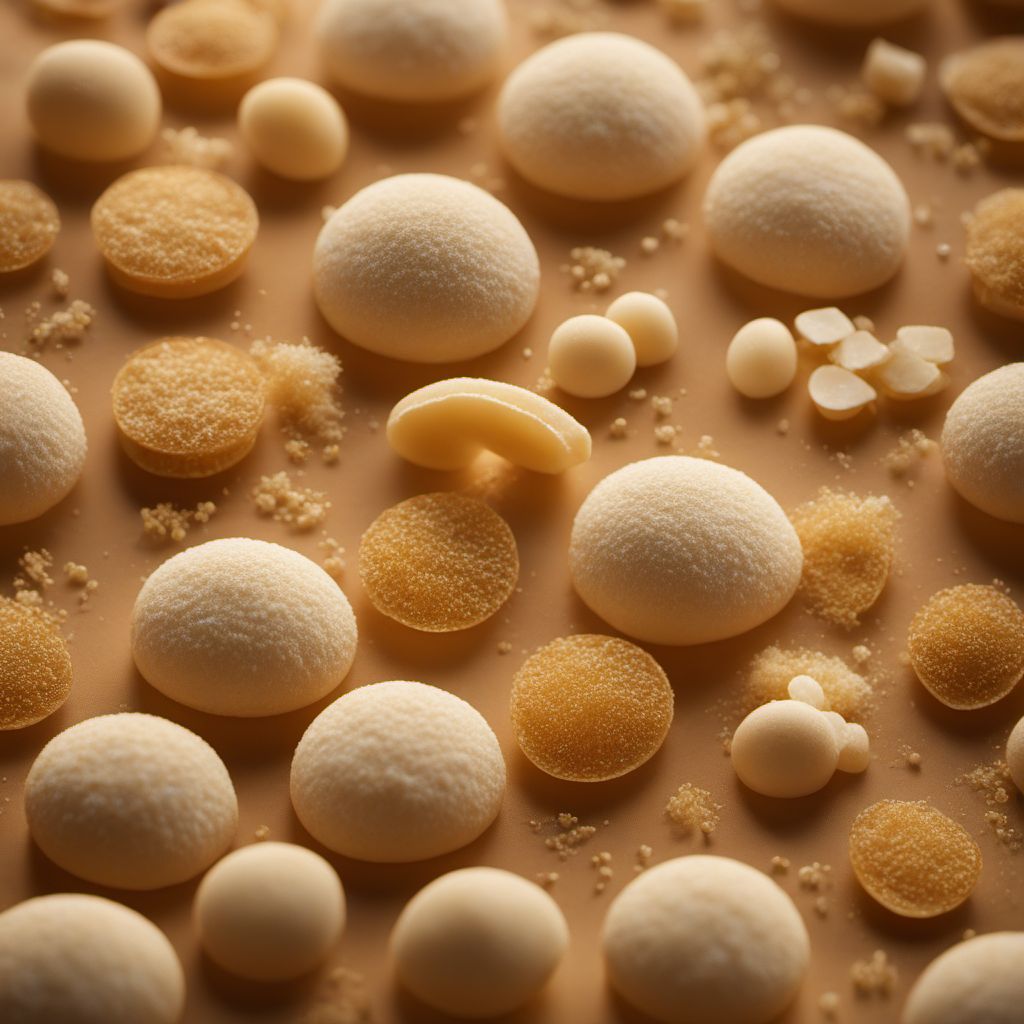
Ingredient
Yeast cultures
Unleashing the Magic of Fermentation: Exploring the World of Yeast Cultures
Yeast cultures are single-celled fungi that belong to the Saccharomyces cerevisiae species. They are typically used in the culinary world to initiate fermentation, converting sugars into alcohol and carbon dioxide. These tiny organisms have a powdery or granular appearance and are available in various forms, including active dry yeast, instant yeast, and fresh yeast. Yeast cultures have a distinct aroma, reminiscent of freshly baked bread, and their texture can range from fine to coarse, depending on the type. When activated, they multiply rapidly, releasing carbon dioxide bubbles that cause dough to rise and create a light, airy texture in baked goods.
Origins and history
The use of yeast cultures in food production dates back thousands of years. The ancient Egyptians were among the first to harness the power of yeast, using it to leaven bread. The process of fermentation was later refined by the Greeks and Romans, who discovered the transformative effects of yeast on wine production. Over time, yeast cultures became an integral part of various culinary traditions worldwide, with each culture developing its unique techniques and recipes.
Nutritional information
Yeast cultures are a rich source of B vitamins, including thiamine, riboflavin, niacin, and folate. They also provide essential minerals such as potassium, magnesium, and zinc. Additionally, yeast cultures are low in fat and cholesterol and are a good source of plant-based protein.
Allergens
Yeast cultures may cause allergic reactions in individuals with a sensitivity to yeast or fungal allergies.
How to select
When selecting yeast cultures, look for products that are within their expiration date and stored in a cool, dry place. For dry yeast, check for clumping or discoloration, as these may indicate moisture or spoilage. Fresh yeast should be soft and crumbly, with a creamy color.
Storage recommendations
To maintain the freshness and viability of yeast cultures, store them in an airtight container in the refrigerator or freezer. Dry yeast can be stored for up to a year in the refrigerator and even longer in the freezer. Fresh yeast should be used within a week or frozen for longer storage.
How to produce
Amateur bakers can produce yeast cultures by creating a starter or "sourdough" culture. This involves combining flour and water and allowing the mixture to ferment naturally, capturing wild yeast from the environment. Regular feeding and maintenance of the starter will ensure a healthy and active yeast culture.
Preparation tips
To activate dry yeast, dissolve it in warm water with a small amount of sugar and let it sit for 5-10 minutes until it becomes frothy. Fresh yeast can be crumbled directly into the dough mixture. When using yeast cultures, it is essential to ensure the liquid used in the recipe is at the correct temperature (usually around 110°F) to activate the yeast properly. Avoid using liquids that are too hot, as they can kill the yeast.
Culinary uses
Yeast cultures are primarily used in baking to leaven bread, rolls, and pastries. They are also essential in the production of beer, wine, and other fermented beverages. Additionally, yeast cultures can be used to make yogurt, kefir, and certain types of cheese.
Availability
Yeast cultures are widely available in grocery stores, supermarkets, and specialty baking supply stores worldwide.

